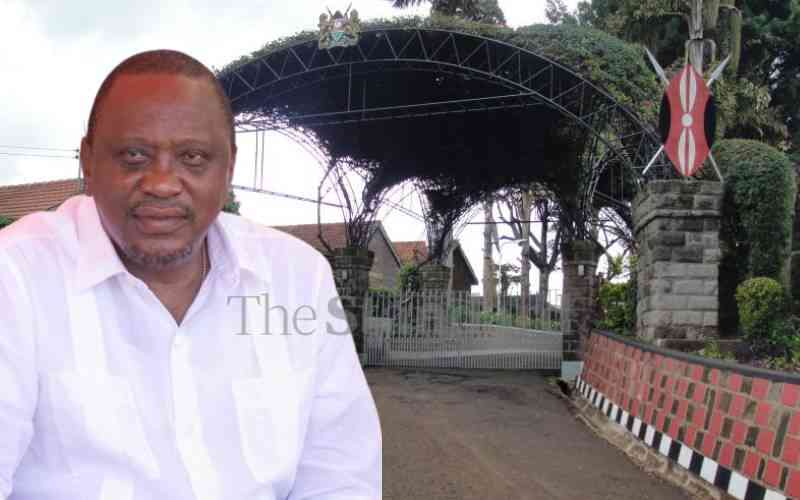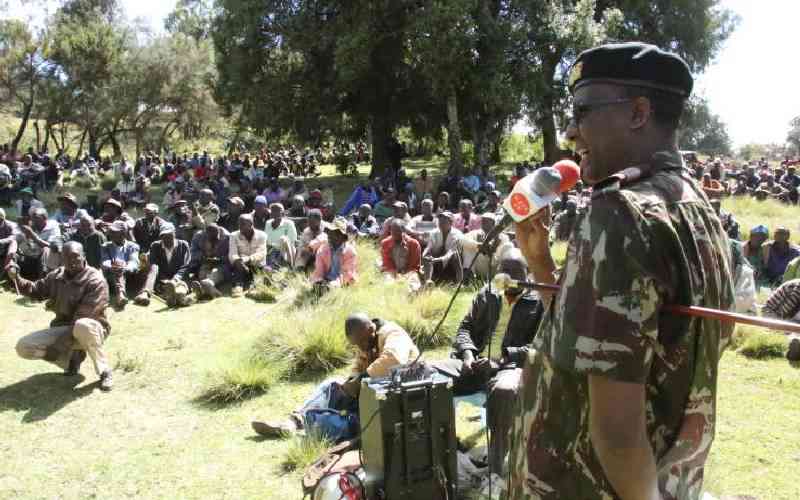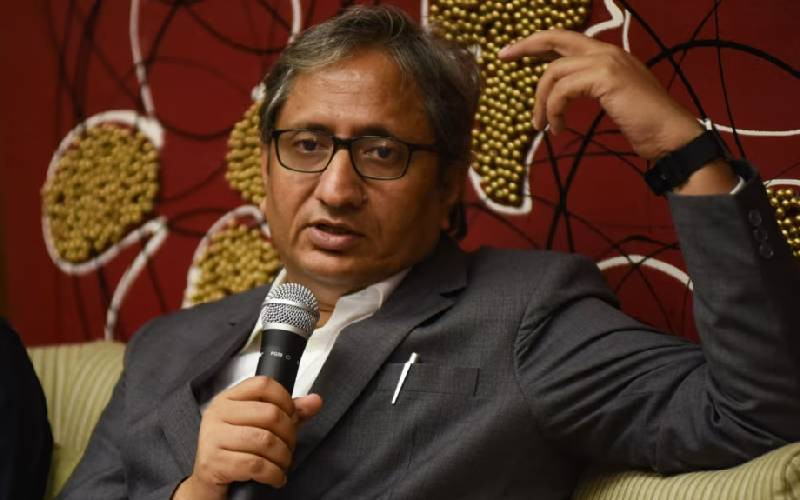The Mau Forest Complex is located about 170 kilometres north-west of Nairobi.
While the forest was declared a Crown Land in the 1930s and made a National Reserve in 1945, it was officially gazetted in 1954 as a Forest Reserve under the Forest Act.
The forest is the largest remaining indigenous forest in Kenya. It covers over 400,000 hectares, is the largest of the country's five water towers as well as the largest closed-canopy forest ecosystem.
The forest borders Kericho County to the West, Narok to the South, Nakuru to the North and Bomet to the South-West. It is divided into seven blocs comprising South-West Mau (Tinet), East Mau, Oldonyo Purro, Transmara, Maasai Mau, Western Mau and Southern Mau.
The complex forms part of the upper water catchment area and it is the catchment source for Lake Victoria and the White Nile. It also has numerous rivers originating from it which carry Mau's waters throughout western Kenya from Lake Turkana in the north to Lake Natron in the south.
These rivers support agriculture, hydro power, urban water supply, tourism and wildlife habitat throughout much of Kenya.
The Eastern Mau Forest is the headwaters for Njoro River which empties its water into Lake Nakuru - one of Kenya's prime tourist attractions.
The forest is also home to rare indigenous trees such as cedar, African olive, bamboo, dombeya and shrubs. It also has exotic trees such as cypress, pine, grevillea robusta and eucalyptus which are regularly planted by the Kenya Forest Department mainly for commercial purposes. The complex also contains a good number of medicinal plants.
"Destruction of the forest has drastically reduced because of the hawk-eyed forest rangers and other security agencies. Communities around the forest have been also educated on the importance of conserving the forest and hence the reduction of charcoal burning, illegal felling of threes and grazing of livestock," says Reuben Kirui, a resident of Siera Leone village which borders the forest in Sagamian, Narok South.
The complex is also home to a diverse selection of wild animals although their numbers have greatly reduced due to human encroachment and deforestation.
The original inhabitants of the forest, the Ogiek, who have lived there for hundreds of years - continue to call the complex their home. They are predominantly hunters and gatherers hence make their livelihood from the forest.
 The Standard Group Plc is a
multi-media organization with investments in media platforms spanning newspaper
print operations, television, radio broadcasting, digital and online services. The
Standard Group is recognized as a leading multi-media house in Kenya with a key
influence in matters of national and international interest.
The Standard Group Plc is a
multi-media organization with investments in media platforms spanning newspaper
print operations, television, radio broadcasting, digital and online services. The
Standard Group is recognized as a leading multi-media house in Kenya with a key
influence in matters of national and international interest.
 The Standard Group Plc is a
multi-media organization with investments in media platforms spanning newspaper
print operations, television, radio broadcasting, digital and online services. The
Standard Group is recognized as a leading multi-media house in Kenya with a key
influence in matters of national and international interest.
The Standard Group Plc is a
multi-media organization with investments in media platforms spanning newspaper
print operations, television, radio broadcasting, digital and online services. The
Standard Group is recognized as a leading multi-media house in Kenya with a key
influence in matters of national and international interest.










